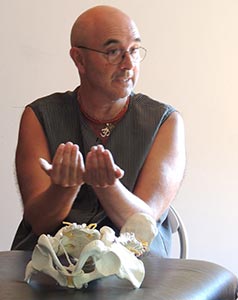
Fascia and Craniosacral Therapy
We all know that man is physically made up of bones, muscles, organs, glands, nerves and blood vessels. But not all of us know that these diverse elements depend closely on a complex system, which ensures the cohesion of the whole, establishing the links between the various sectors and levels of the body. This is the fascial system or fascia.
This system is made up of connective tissue, the most abundant in the body, composed mainly of collagen and elastic fibers. This tissue also surrounds and protects each structure of the body, from the cell to the organ. It is formed by a whitish tissue whose thickness, density, resistance and flexibility depend on its location and the mechanical requirements of the area.
“The fascia is full of sensory receptors each connected to a nerve. Its function is to inform the central nervous system, among other aspects, of the mechanical tensions experienced by this tissue and, by extension, the body. It is the largest sensory system in the organism, ahead of the skin”.
The fascial system is a network of tissues that is elastic, stable and malleable and is mainly oriented in the longitudinal direction rather than in the transverse direction. It is free to slide a few millimeters when the tissue is relaxed, more apparently in the longitudinal than transverse direction (it can be said that we can travel from any part of the body to another part through the fascial system).
This orientation (longitudinal and vertical) of the fascia and also of the skeletal muscle system between the top of the head and the feet finds opposition in 5 body structures in which the connective tissue is predominantly oriented transversely through the body. Each of these transverse planes is a possible natural location for body restrictions, which either by hypertone or tension will affect the natural longitudinal sliding of the fascia directly influencing the craniosacral rhythm and the functioning of other body structures (organs, nerves, blood vessels).
We will learn to work these areas before working with the cranial bones: pelvic diaphragm, respiratory, thoracic cavity, hyoid and suboccipital diaphragm.
(Abstract article Alberto Panizo, Craniosacral notebooks)

